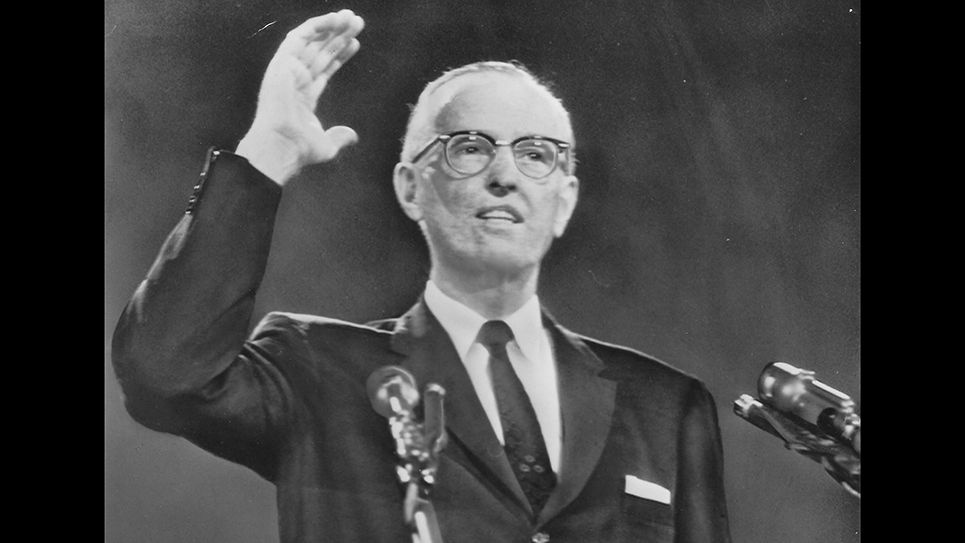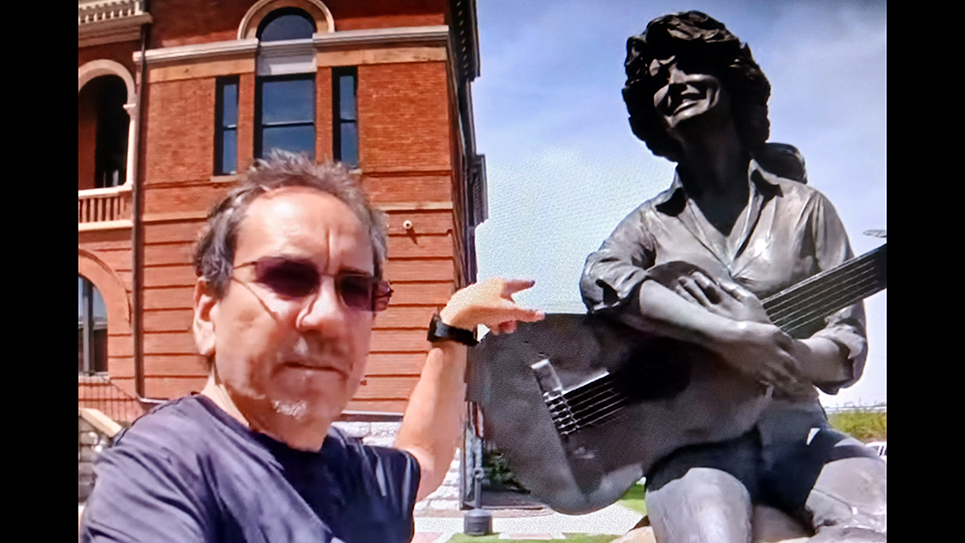East Tennessee is a beautiful region that is rich with history and interesting places. Each year, the East Tennessee Preservation Alliance recognizes outstanding persons, projects and organizations working to preserve our heritage for future generations. This year, our ten award winners are celebrated for their contributions to historic preservation and we want to share their stories. Awards were presented during a special reception at historic Arrow Hill in Talbott near Morristown on the evening of November 4th.
Anderson Hall has been an anchor on the Maryville College campus since 1870. Named after the school’s founder, the structure received its first top-to-bottom renovation in 2014. The Johnson Architecture firm took a “listen, then draw” approach to upgrading the building while still maintaining its historical significance. The wide, open staircases, arch entryways, and iconic bell tower are still present alongside new mechanical systems, high-definition screens, and other modern appointments. The 19th century package now contains a 21st century learning environment.
The Diggs family home in Oliver Springs has seen some changes. Built in 1905 by Alfred H. and Scotland Diggs, the house had to be moved away from the path of a new four-lane highway. It remains in the family and Bettina Diggs Cox recently embarked on a full renovation. The once missing porch was rebuilt and rooms throughout have been beautifully renovated. A unique feature of the home are the four fireplace mantels salvaged from the once popular Oliver Springs Hotel.
Lodges and halls often become central gathering places for small towns and rural communities. This was the case in Wartburg when the American Legion Post 149 was built in 1946 following World War II. Built by local carpenters and featuring Crab Orchard stone, the building fell into disrepair and by 2011 was covered in kudzu. That year, a group of veterans and volunteers both reorganized Post 149 and began restoring the Post. But the story is bigger than just building improvements. In the process, the Post has become a community gathering place once again. Used for veteran’s services, fundraisers, concerts, weddings, meetings and other special events, it shows what a community can do when people work together on a common vision.
The Great Smoky Mountains National Park is the most visited national park in America. Miles of trails entice many people to explore the park’s natural beauty, but two men have hiked the trails with a different purpose in mind. Bob Lochbaum and Frank March have been documenting old cemeteries, about 200. They plan to publish a book with trail maps tracing families who once called the mountains home. Not only do the gentlemen map locations, they have helped with restoration. Their efforts are helping to preserve the cultural history of a mountain people.
Ken and Rowena Smith have a hand in preserving history every day. The Smith’s have successfully renovated five buildings in downtown Morristown. Their civic leadership and business investment in the historic heart of the city has been integral to its recent growth. They led the effort to have their own home, Barton Springs in east Hamblen County, listed in the National Register of Historic Places. Most recently, they purchased and have been restoring another National Register property, Arrow Hill (Watkins-Witt House) in west Hamblen County. Their love of history and the community is helping to secure the future for these significant places.
Never underestimate what a few dedicated individuals can accomplish. This is well demonstrated by the Tanner Preservation Alliance in Newport. Alumni of the Tanner School have been working hard to save the place that educated Cocke County’s African American students from the 1920’s to 1966. The current building was part of the original Rosenwald School. In June 2016, the Alliance received $250,000 from the State of Tennessee to assist with restoration and $150,000 from the City of Newport. The Tanner School will emerge as an important community center for Cocke County citizens.
Another example of community coming together can be found in Jefferson City. No one will argue that downtown Jefferson City, once known as Mossy Creek, has suffered years of neglect. But in 2010, a small group came together to learn about downtown revitalization though the Tennessee Downtowns programs. Since then, the Mossy Creek Foundation was established, a historic zoning commission was formed, certified local government status earned, and design guidelines approved. A façade improvement grant program has been helping building and business owners improve their storefronts. Most recently, a new festival park was announced in the center of it all. Jefferson City has laid the foundation for a great downtown rebirth.
The Tennessee Main Street program has been helping downtowns renew their economic vitality and cultural significance through a proven approach developed by the National Main Street Center. Communities must meet rigorous criteria in order to become a certified Main Street participant. It takes a lot of work from community leaders, business and property owners, and volunteers. In September of 2015, Sevierville joined 30 other towns across our state when the Sevierville Commons Association became certified for the first time. We congratulate them on taking this important step to ensuring a healthy and vibrant historic heart for Sevierville.
The Tennessee Valley Authority (TVA) was one of the great social experiments of the Roosevelt administration. From rural electrification to economic development, TVA has had a major impact on the history of the Tennessee River Valley. In August, Norris Dam celebrated its 80th birthday and became the first TVA-built dam to be placed in the National Register of Historic Places. More dams across five states are expected to follow suit. We applaud TVA for recognizing its historic contributions to both the built environment and life of valley residents.
Downtown Morristown may be the most unique central business district in Tennessee, if not one the most unique in the country. Its 1960’s urban renewal efforts built SkyMart, an elevated sidewalk system, through the historic core. For a long time, the historic significance of the downtown area was in question. But no longer. In March, downtown Morristown was added to the National Register of Historic Places and the designation noted that the overall historic building inventory was intact. SkyMart itself reached a historic milestone, passing the 50 year mark. We commend the Crossroads Downtown Partnership and City of Morristown for obtaining this prestigious designation.






